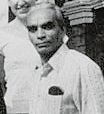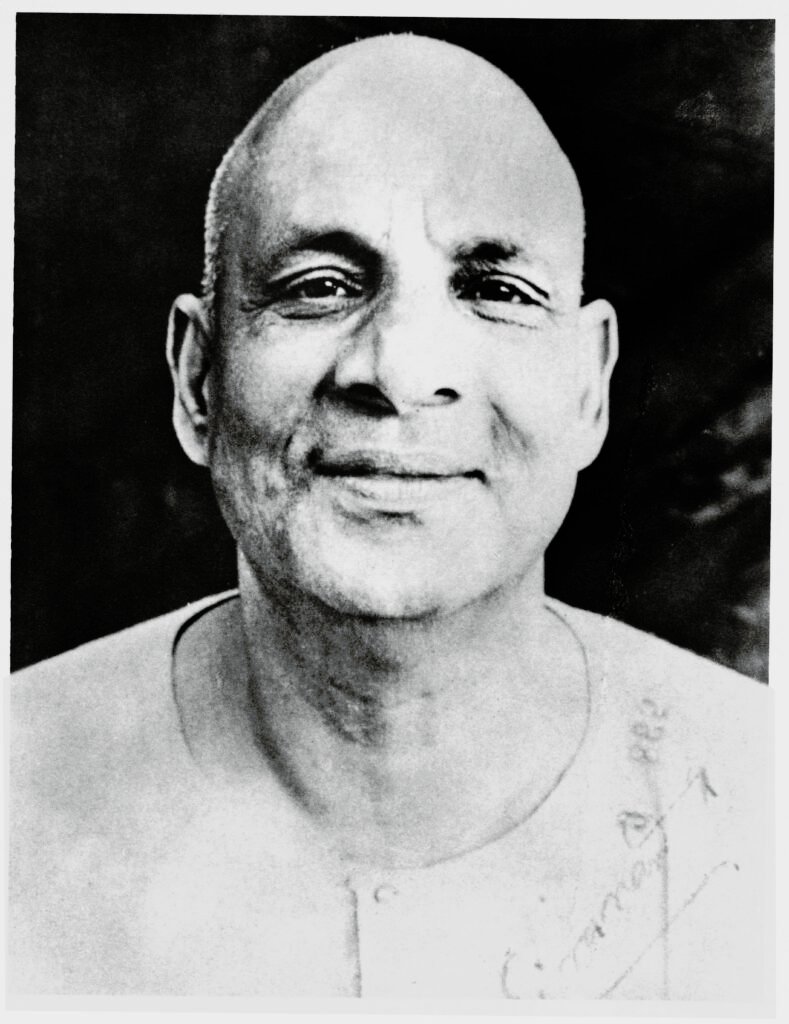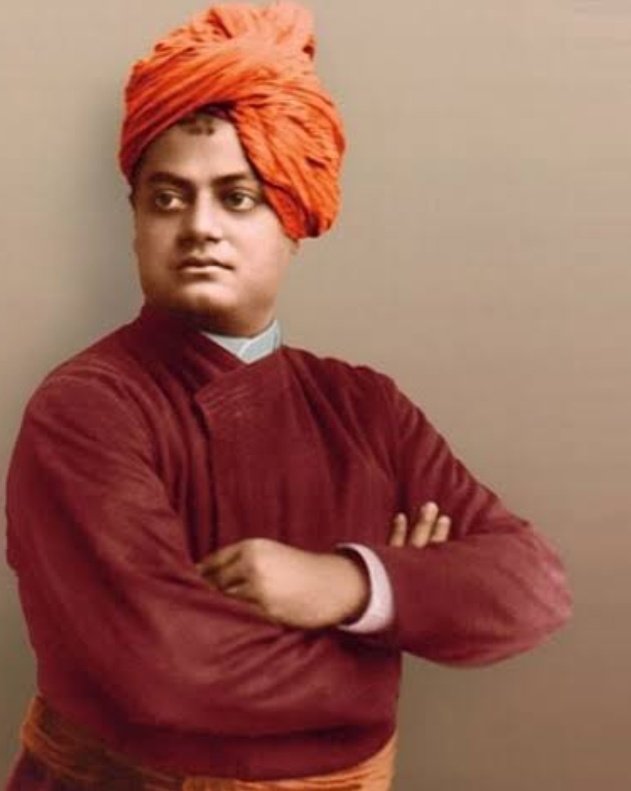Table of Contents
1. B.K.S. Iyengar guru

- Full Name: Bellur Krishnamachar Sundararaja Iyengar.
- Birth: December 14, 1918, in Bellur, Karnataka, India.
- Death: August 20, 2014.
- Key Teachings: Precision, alignment, and the use of props (like blocks and straps) in yoga practice.
- Contributions:
- Founded Iyengar Yoga, a style that emphasizes detail and accuracy in asanas (postures).
- Authored Light on Yoga (1966), often referred to as the “bible of yoga,” which systematically explains yoga postures and philosophy.
- Made yoga accessible to people of all ages and physical abilities.
- Legacy:
- Established the Ramamani Iyengar Memorial Yoga Institute in Pune, India.
- Awarded the Padma Shri, Padma Bhushan, and Padma Vibhushan by the Indian government.
- His method is practiced worldwide, with certified Iyengar Yoga teachers in over 70 countries.
- Autobiography: Astadala Yogamala (a collection of his works and teachings) and Light on Life (a reflective book on his journey and philosophy).
- Explanation: B.K.S. Iyengar was a pioneer in bringing yoga to the West. His autobiography-like works delve into his struggles with illness as a child, his dedication to mastering yoga, and his development of Iyengar Yoga, which focuses on precision and alignment. His book Light on Yoga is considered the bible of modern yoga.
2. Paramahansa Yogananda guru

- Full Name: Mukunda Lal Ghosh.
- Birth: January 5, 1893, in Gorakhpur, India.
- Death: March 7, 1952, in Los Angeles, USA.
- Key Teachings: Kriya Yoga, meditation, and self-realization.
- Contributions:
- Founded the Self-Realization Fellowship (1920) to spread Kriya Yoga and meditation globally.
- Wrote Autobiography of a Yogi (1946), a spiritual classic that has inspired millions, including Steve Jobs.
- Introduced yoga and meditation to the West, blending Eastern spirituality with Western science.
- Legacy:
- His teachings continue through the Self-Realization Fellowship and its worldwide centers.
- His book remains one of the most influential spiritual texts of the 20th century.
- Autobiography: Autobiography of a Yogi (1946).
- Explanation: This classic spiritual autobiography details Yogananda’s journey from his childhood in India to his mission of spreading Kriya Yoga in the West. It explores his encounters with saints, yogis, and spiritual masters, offering profound insights into yoga and meditation. The book has inspired millions, including Steve Jobs, who reportedly reread it annually.
3. Swami Sivananda guru

- Full Name: Kuppuswami Iyer.
- Birth: September 8, 1887, in Pattamadai, Tamil Nadu, India.
- Death: July 14, 1963.
- Key Teachings: Synthesis of yoga (asanas, pranayama, meditation, and devotion).
- Contributions:
- Founded the Divine Life Society (1936) in Rishikesh, India.
- Authored over 200 books on yoga, Vedanta, and spirituality.
- Emphasized the holistic approach to yoga, integrating physical, mental, and spiritual practices.
- Legacy:
- His disciples, including Swami Vishnudevananda and Swami Satyananda, spread his teachings globally.
- The Sivananda Yoga Vedanta Centers, established by Swami Vishnudevananda, continue his work.
- Autobiography: Autobiography of Swami Sivananda (though much of his life is also documented in his disciples’ writings).
- Explanation: Swami Sivananda was a medical doctor before becoming a monk. His autobiography reflects his transition from a worldly life to a spiritual one. He founded the Divine Life Society and authored over 200 books on yoga, Vedanta, and spirituality, emphasizing the synthesis of yoga practices.
4. Sri Sri Ravi Shankar guru
guru
- Full Name: Ravi Shankar.
- Birth: May 13, 1956, in Papanasam, Tamil Nadu, India.
- Key Teachings: Sudarshan Kriya, meditation, and holistic living.
- Contributions:
- Founded the Art of Living Foundation (1981), which offers programs for stress relief and personal growth.
- Developed Sudarshan Kriya, a powerful breathing technique that promotes mental and physical well-being.
- Advocated for global peace and humanitarian efforts.
- Legacy:
- Millions of people in over 150 countries practice his techniques.
- Received numerous awards, including the Padma Vibhushan (India’s second-highest civilian award).
- Autobiography: While he hasn’t written a formal autobiography, his teachings and life story are captured in books like Guru of Joy by François Gautier.
- Explanation: Sri Sri Ravi Shankar is a global humanitarian and spiritual leader. His life revolves around promoting peace and well-being through yoga and meditation. He founded the Art of Living Foundation, which has impacted millions worldwide. His teachings emphasize breathwork (Sudarshan Kriya) and mindfulness.
5. Swami Vivekananda guru

- Full Name: Narendranath Datta.
- Birth: January 12, 1863, in Kolkata, India.
- Death: July 4, 1902.
- Key Teachings: Vedanta, karma yoga, and universal spirituality.
- Contributions:
- Introduced yoga and Vedanta to the West at the 1893 Parliament of Religions in Chicago.
- Founded the Ramakrishna Mission to promote spiritual and social service.
- Emphasized the unity of all religions and the importance of selfless service.
- Legacy:
- His teachings continue to inspire millions through the Ramakrishna Mission and his writings.
- Considered a key figure in the revival of Hinduism and yoga in modern times.
- Autobiography: The Life of Swami Vivekananda by His Eastern and Western Disciples (a comprehensive biography).
- Explanation: Swami Vivekananda’s life is a testament to his mission of bridging Eastern spirituality with Western thought. His famous speech at the 1893 Parliament of Religions in Chicago introduced yoga and Vedanta to the West. His writings and lectures, compiled in Complete Works of Swami Vivekananda, reflect his deep wisdom and vision.
6. Tirumalai Krishnamacharya guru

- Full Name: Tirumalai Krishnamacharya.
- Birth: November 18, 1888, in Mysore, India.
- Death: February 28, 1989.
- Key Teachings: Adaptive yoga, vinyasa, and individualized practice.
- Contributions:
- Known as the “Father of Modern Yoga” for reviving Hatha Yoga and adapting it to modern needs.
- Taught legendary yoga masters, including B.K.S. Iyengar, Pattabhi Jois, and T.K.V. Desikachar.
- Developed therapeutic yoga practices for healing and wellness.
- Legacy:
- His teachings form the foundation of many modern yoga styles, including Iyengar Yoga, Ashtanga Yoga, and Viniyoga
- Autobiography: Krishnamacharya: His Life and Teachings by A.G. Mohan.
- Explanation: Known as the “Father of Modern Yoga,” Krishnamacharya’s life is documented through the accounts of his students. He revived Hatha Yoga and adapted it to individual needs, teaching legendary figures like B.K.S. Iyengar and Pattabhi Jois. His legacy lives on through the diverse yoga styles he inspired.
7. Pattabhi Jois guru
guru
- Full Name: Krishna Pattabhi Jois.
- Birth: July 26, 1915, in Kowshika, Karnataka, India.
- Death: May 18, 2009.
- Key Teachings: Ashtanga Vinyasa Yoga.
- Contributions:
- Founded Ashtanga Yoga, a dynamic and flowing style of yoga that synchronizes breath with movement.
- Established the Ashtanga Yoga Research Institute in Mysore, India.
- Popularized Ashtanga Yoga globally through his students.
- Legacy:
- Ashtanga Yoga is now practiced worldwide, with dedicated schools and practitioners.
- Autobiography: Guruji: A Portrait of Sri K. Pattabhi Jois Through the Eyes of His Students by Guy Donahaye and Eddie Stern.
- Explanation: Pattabhi Jois popularized Ashtanga Yoga, a dynamic and rigorous style of yoga. While he didn’t write an autobiography, this book captures his life and teachings through the perspectives of his students. His dedication to preserving the traditional Ashtanga system has left a lasting impact on the yoga world.
8. Sadhguru (Jaggi Vasudev) guru

- Full Name: Jagadish Vasudev.
- Birth: September 3, 1957, in Mysore, India.
- Key Teachings: Inner Engineering, meditation, and self-transformation.
- Contributions:
- Founded the Isha Foundation (1992), which offers yoga programs and social initiatives.
- Developed Inner Engineering, a comprehensive system for personal growth and well-being.
- Advocates for environmental conservation and rural upliftment.
- Legacy:
- Millions of people worldwide practice his techniques, and his foundation has a global presence.
- Autobiography: Sadhguru: More Than a Life by Arundhathi Subramaniam.
- Explanation: This biography explores Sadhguru’s transformation from a young boy in Mysore to a globally renowned spiritual leader. It highlights his mystical experiences, including his enlightenment at the age of 25, and his mission to share yoga and meditation through the Isha Foundation.
9. Swami Ramdev guru

- Full Name: Ramkrishna Yadav.
- Birth: December 25, 1965, in Mahendragarh, Haryana, India.
- Key Teachings: Yoga for health, Ayurveda, and pranayama.
- Contributions:
- Popularized yoga and Ayurveda through mass yoga camps and television programs.
- Founded Patanjali Ayurved, a company promoting natural and Ayurvedic products.
- Advocated for yoga as a tool for physical and mental well-being.
- Legacy:
- Played a key role in reviving interest in traditional Indian practices.
- Autobiography: While he hasn’t written an autobiography, his life and work are documented in books like Yog Se Yog Tak (Hindi).
- Explanation: Swami Ramdev is a household name in India for popularizing yoga and Ayurveda. His journey from a small village to becoming a global yoga icon is inspiring. He hosts mass yoga camps and television shows, making yoga accessible to millions.
10. Amrit Desai guru

- Full Name: Amrit Desai.
- Birth: 1932 in Halol, Gujarat, India.
- Key Teachings: Kripalu Yoga, mindfulness, and self-awareness.
- Contributions:
- Founded Kripalu Yoga, which emphasizes meditation in motion and self-acceptance.
- Established the Kripalu Center for Yoga & Health, one of the largest yoga retreats in North America.
- Legacy:
- Kripalu Yoga continues to inspire practitioners worldwide.
- Autobiography: Kripalu Yoga: Meditation in Motion (reflects his teachings and journey).
- Explanation: Amrit Desai founded Kripalu Yoga, which emphasizes self-awareness and mindfulness. His life story is one of spiritual exploration and dedication to sharing yoga’s transformative power. The Kripalu Center for Yoga & Health continues to be a hub for yoga practitioners worldwide.
11.Who is the most famous yoga guru?
Several yoga gurus have gained worldwide recognition, but some of the most famous include:
- Patanjali – The ancient sage who compiled the Yoga Sutras, the foundational text of classical yoga.
- Swami Vivekananda – Introduced yoga and Vedanta to the Western world in the late 19th century.
- Tirumalai Krishnamacharya – Known as the “father of modern yoga,” he trained many influential yoga teachers.
- B.K.S. Iyengar – Founder of Iyengar Yoga, which emphasizes alignment and precision in poses.
- Pattabhi Jois – Developed and popularized Ashtanga Yoga.
- Paramahansa Yogananda – Author of Autobiography of a Yogi, he introduced Kriya Yoga to the West.
- Baba Ramdev – A modern yoga guru who has popularized yoga through television and mass yoga movements.
Each of these figures has played a significant role in shaping how yoga is practiced worldwide.
12.Who is the world’s famous yoga instructor?
Several yoga instructors have gained global fame for their teachings, books, and online presence. Some of the most well-known yoga instructors include:
- B.K.S. Iyengar – Founder of Iyengar Yoga, known for his detailed approach to alignment and use of props.
- Pattabhi Jois – Developed and popularized Ashtanga Yoga, a dynamic and physically demanding style.
- Adriene Mishler – A modern yoga instructor famous for her YouTube channel Yoga with Adriene, with millions of followers worldwide.
- Sadhguru (Jaggi Vasudev) – A spiritual leader and yoga instructor who founded the Isha Foundation and promotes inner engineering and meditation practices.
- Baba Ramdev – An Indian yoga guru known for making yoga widely accessible through television and large public gatherings.
- Kino MacGregor – A leading Ashtanga Yoga teacher with a strong online presence, known for her Instagram and YouTube teachings.
Each of these instructors has significantly influenced yoga’s global reach and practice.
13.Who is the God of yoga?
In Hindu tradition, Lord Shiva is often considered the God of Yoga. He is known as Adi Yogi (the first yogi) and Adi Guru (the first teacher). According to legend, Shiva transmitted the knowledge of yoga to the Saptarishis (seven sages), who then spread it across the world.
In addition to Shiva, Patanjali, the ancient sage who compiled the Yoga Sutras, is highly revered as a key figure in the development of yoga philosophy.
Many yogis also worship Krishna and Lord Hanuman, as they embody devotion, discipline, and strength—important qualities in yoga practice.
14. What are the 10 types of yoga?
There are many styles of yoga, each with unique benefits and approaches. Here are 10 major types of yoga:
Traditional Yoga Styles
- Hatha Yoga – A foundational style that focuses on physical postures (asanas) and breathing (pranayama), often slow-paced and beginner-friendly.
- Ashtanga Yoga – A dynamic and structured practice involving a fixed sequence of poses performed in a flow, emphasizing strength and endurance.
- Kundalini Yoga – A spiritual form of yoga that combines movement, breathing techniques, chanting, and meditation to awaken inner energy.
- Raja Yoga – Known as the “royal path,” it focuses on meditation and self-discipline, as outlined in Patanjali’s Yoga Sutras.
- Karma Yoga – The path of selfless service, where actions are performed without attachment to results, promoting spiritual growth.
- Bhakti Yoga – The yoga of devotion, involving prayer, chanting, and surrender to a higher power.
- Jnana Yoga – The path of wisdom and knowledge, emphasizing self-inquiry and the study of spiritual texts.
Modern Yoga Styles
- Iyengar Yoga – A precise style that emphasizes alignment and the use of props like blocks and straps to perfect poses.
- Vinyasa Yoga – A flowing style where poses are linked together with breath, often creating a dynamic and creative sequence.
- Bikram Yoga (Hot Yoga) – A style that consists of a fixed sequence of 26 postures practiced in a heated room (about 40°C or 105°F) to promote flexibility and detoxification.
15. What are 12 sets of Surya Namaskar?
There are many styles of yoga, each with unique benefits and approaches. Here are 10 major types of yoga:
Traditional Yoga Styles
- Hatha Yoga – A foundational style that focuses on physical postures (asanas) and breathing (pranayama), often slow-paced and beginner-friendly.
- Ashtanga Yoga – A dynamic and structured practice involving a fixed sequence of poses performed in a flow, emphasizing strength and endurance.
- Kundalini Yoga – A spiritual form of yoga that combines movement, breathing techniques, chanting, and meditation to awaken inner energy.
- Raja Yoga – Known as the “royal path,” it focuses on meditation and self-discipline, as outlined in Patanjali’s Yoga Sutras.
- Karma Yoga – The path of selfless service, where actions are performed without attachment to results, promoting spiritual growth.
- Bhakti Yoga – The yoga of devotion, involving prayer, chanting, and surrender to a higher power.
- Jnana Yoga – The path of wisdom and knowledge, emphasizing self-inquiry and the study of spiritual texts.
Modern Yoga Styles
- Iyengar Yoga – A precise style that emphasizes alignment and the use of props like blocks and straps to perfect poses.
- Vinyasa Yoga – A flowing style where poses are linked together with breath, often creating a dynamic and creative sequence.
- Bikram Yoga (Hot Yoga) – A style that consists of a fixed sequence of 26 postures practiced in a heated room (about 40°C or 105°F) to promote flexibility and detoxification.
16. What are the 12 asanas?
The 12 asanas commonly refer to the 12 poses of Surya Namaskar (Sun Salutation). These poses form a dynamic sequence that improves flexibility, strength, and overall well-being.
12 Asanas of Surya Namaskar:
- Pranamasana (Prayer Pose) – Stand straight with feet together and palms joined at the chest.
- Hasta Uttanasana (Raised Arms Pose) – Inhale, stretch the arms up, and bend slightly backward.
- Padahastasana (Hand to Foot Pose) – Exhale, bend forward, and touch the hands to the feet.
- Ashwa Sanchalanasana (Equestrian Pose) – Inhale, step the right leg back, and look up.
- Dandasana (Plank Pose) – Exhale, step the left leg back, keeping the body straight.
- Ashtanga Namaskara (Eight-Limbed Pose) – Lower the knees, chest, and chin to the floor.
- Bhujangasana (Cobra Pose) – Inhale, lift the chest, keeping the legs and pelvis grounded.
- Adho Mukha Svanasana (Downward-Facing Dog Pose) – Exhale, lift the hips, forming an inverted “V” shape.
- Ashwa Sanchalanasana (Equestrian Pose) – Inhale, bring the right leg forward and look up.
- Padahastasana (Hand to Foot Pose) – Exhale, bring the left leg forward and bend down.
- Hasta Uttanasana (Raised Arms Pose) – Inhale, stretch the arms up and bend slightly backward.
- Pranamasana (Prayer Pose) – Exhale, return to the starting position.
This completes one half of a round. A full round requires repeating the sequence while leading with the left leg in step 4.
